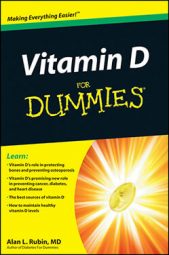If you want to know whether you have enough vitamin D in your body, you must have a blood test for 25-hydroxyvitamin D. Depending on where you live, you may have trouble convincing your doctor to order a vitamin D test for you. Because of the high demand over the past few years, the test is no longer covered in some parts of the U.S. and Canada because the cost was escalating enormously and the labs were getting overloaded.
If you can’t get the test done, you may have to take a vitamin D supplement just to be safe. On the other hand, if you do have the test done, your doctor will be able to tell you whether your serum 25-hydroxyvitmain D level falls within the “normal” range.
If your serum 25-hydroxyvitamin D level isn’t high enough, your doctor will have you take a supplement to build up your level. Then your doctor should test you again in a few months to make sure your serum levels are high enough.
Serum 25-hydroxyvitamin D levels can be reported either as nanograms per milliliter (ng/ml) or as nmoles per liter (nmol/L). Don’t be confused if you see the value either way.
The current definitions of levels of vitamin D are:
Deficient: Less than or equal to 10 ng/ml (25 nmol/L)
Insufficient: Between 10 ng/ml and 20 ng/ml (25 to 50 nmol/L)
Sufficient: More than 20 ng/ml (50 nmol/L)
There is some evidence that even higher serum 25-hydroxyvitamin D levels, more than 30 ng/ml (75 nmol/L), may help protect you from chronic diseases like cancer and diabetes. However, this issue is controversial.
If your level is insufficient, your doctor will recommend that you start taking a vitamin D supplement to get your levels up. If your level is deficient, your doctor will put you on a high repletion dose of vitamin D — probably 50,000 IU once a week for a month. This will raise your serum vitamin D levels quickly and put them in a healthy range.
At first glance, having a blood test to check 25-hydroxyvitamin D levels doesn’t seem correct, because this compound isn’t calcitriol or active vitamin D. You’d think that measuring calcitriol would give you a more accurate picture, but it doesn’t for several reasons:
First, 25-hydroxyvitamin D is more stable than active vitamin D, so it reflects vitamin D status over the course of the last month. Whereas newly made calcitriol lasts only a few hours in your body, 25-hydroxyvitamin D lasts two to three weeks.
Another reason is that as your body becomes deficient in vitamin D, it turns on the production of calcitriol to maintain its level — it’s only when most of the body’s vitamin D is used up that calcitriol levels finally begin to fall. By that point, the body is very deficient in vitamin D.

